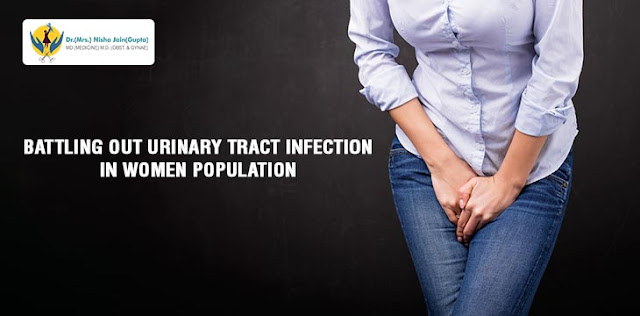Talking About Amenorrhea In Women
The absence of menses is referred to as amenorrhea and it happens in women of reproductive age. It can be primary or secondary when diagnosed. Women who have never menstruated are classified as primary. Secondary is caused by other factors such as in women who have menstruated and then do not for 3 or more cycles. The type of treatment given for amenorrhea treatment is dependent upon the cause. A variety of conditions can cause primary amenorrhea. An absence of reproductive organs can cause it. A little obstruction in the genital track can be the reason. Chromosomal abnormalities usually occur with diseases such as Turner's Syndrome can be the cause. Some of them are pituitary lesions, hypothalamic lesions etc. could be the cause menses absence.
Reference
Meet Dr. Nisha Jain, and get the best treatment for amenorrhea. She can meet at her clinic, which is the best gynecological clinic in Delhi-NCR
Content Source : https://drnishajaingynecologist.home.blog/2020/01/22/talking-about-amenorrhea-in-women/
What Is Secondary Amenorrhea?
Secondary amenorrhea is often caused by pregnancy. PCOD or Polycystic Ovarian Disorder can also be the cause. Other causes can be absence of ovulation, thyroid disorders, taking oral contraceptives, various medications, any chronic illness, excessive physical exercise, autoimmune ovarian failure, premature menopause and adrenal disease such as Cushing's Syndrome. Symptoms can include discharge from the nipples, excessive hair growth on the face or weight gain which could be an indicator for Cushing's Syndrome or hyperthyroidism. Some other symptoms could include weight loss that could be associated with Anorexia Nervosa or hyperthyroidism. Loss of menses itself is an indicator. This disorder is an external manifestation of a major hormonal imbalance in the system. Diagnosis is aimed at finding the underlying cause of it. A thorough detailed medical review is required to accurately assess one's health along with a thorough physical examination. In case of amenorrhea symptoms of puberty should be looked for. In secondary amenorrhea pregnancy is ruled out. A hormonal panel should be done to assess thyroid hormones and prolactin levels. After reviewing blood panels if there are high levels of luteinizing hormone or follicle stimulating hormone these could suggest that the ovaries are failing or there is evidence of PCOD.Some Of The Conventional Treatment Options
Conventional treatment options depend on the age, causative factor, desire for children and psychological condition of the patient. There is substitution therapy and stimulation therapy. Substitution therapy includes treatment with cyclic estrogen or an estrogen-progesterone blend in case of ovarian failure. This is good for younger patients but is also good for patients over 40 who have psychological factors to take into consideration. Stimulation therapy is used in the case of pituitary failure where the ovaries are stimulated with human gonadotrophins or non-steroidal products such as Clomiphene Citrate. Removal or treatment of the thyroid or adrenal glands may help to reestablish ovarian function. For more permanent amenorrhea treatment that does not only mask the symptoms it is important to think about the primary cause of why hormones are out of balance and work toward balancing them. Taking a natural approach to treating both the primary and secondary symptoms will offer relief that is lasting. These methods work so well because they stimulate the ovaries and the pituitary glands and regulate them as well as menstruation. They will induce menses and regulate the length of the menstrual cycle as well as the entire endocrine axis offering results that will last.Reference
Meet Dr. Nisha Jain, and get the best treatment for amenorrhea. She can meet at her clinic, which is the best gynecological clinic in Delhi-NCR
Content Source : https://drnishajaingynecologist.home.blog/2020/01/22/talking-about-amenorrhea-in-women/




Comments
Post a Comment